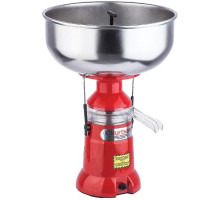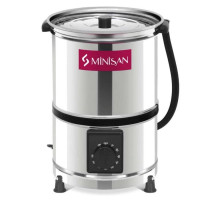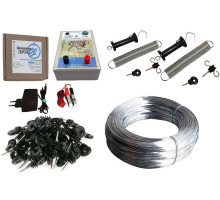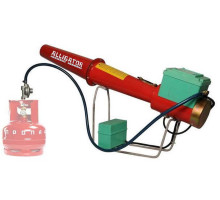Organic livestock farming and environmental standards in Ukraine in 2025: new opportunities for farmers
Organic livestock farming in Ukraine in 2025 is becoming not just a fashionable trend, but a necessary direction for the development of the agricultural sector. In the context of global solar energy regarding environmentally friendly products taken before the European Union and the desire for sustainable agriculture, this topic is at the forefront. How does the state support farmers who switch to organic? What prospects are opening up for livestock farmers? And what challenges do they face? This article presents 10 thousand symbols about everything you need to know about organic livestock farming in Ukraine in 2025, give practical advice and help understand how to maximize these niches.
Why is organic livestock farming so relevant in 2025?
The global organic market is growing rapidly: according to the International Federation of Organic Agriculture (IFOAM), its volume in 2024 exceeded $150 billion, and demand continues to change. Consumers in the EU, the USA and even in the foreign market of Ukraine are increasingly choosing milk, meat and eggs labeled "organic", are willing to pay a premium price for them. For Ukraine, as a country with strong agricultural potential, this is a chance not only to restore livestock farming after the war, but also to occupy its niche in the international arena.
In 2025, organic livestock farming will be of particular importance due to the European Union countries. After signing agreements on harmonization of EU standards, Ukrainian farmers gained access to the market, where organic products are in demand more than ever. In addition, the war prompted the search for new approaches: many farms that run sales channels are promoting organic as an opportunity to restart.
The state is also not left out. As part of the Green Agrarian program, launched in 2024, Ukraine has pledged to introduce environmentally friendly production. In 2025, about 1.5 billion hryvnias will be allocated from the budget to support organic agriculture, plus another 200 million dollars from international partners such as the EU and the World Bank. This makes the transition to organic not only an idea, but also a significant focus on farmers.
Main areas of support for organic livestock farming
Government and global support in 2025 will include several key aspects:
- Grants and subsidies for certification
Transition to organic certification according to an international standard (for example, EU Organic or USDA Organic requirements). This is an expensive process, the cost of which can range from 50 to 200 thousand hryvnias, depending on the scale of the farm. In 2025, the state will compensate up to 70% of the costs of certification, grants of up to 2 million hryvnias are available through the Green Agrarian program. For example, a farm in Cherkasy region received 1.5 million hryvnias from dairy certification in 2024 and is already exporting cheese to Poland. - Soft loans from
The "5-7-9%" modernization program in 2025 expanded the conditions for expert farmers. Rates start at 5% per annum, and loans of up to 10 million hryvnia can be used to purchase equipment (for example, chemical-free grazing systems) or build environmentally friendly farms. More than 500 farms have already taken advantage of this last year. - Subsidies for organic feeding
One of the main requirements of organic monoculture is the use of feed without GMOs, pesticides, and synthetic methods. In 2025, farmers who grow their own organic feed (alfalfa, clover) will be able to receive up to 12 thousand hryvnias per hectare. This stimulates the rejection of imported feed and the support of a closed cycle. - Support for cooperatives
Small farmers who unite into cooperatives are given priority in the distribution of grants and subsidies. For example, a cooperative of 10 farms in the Volyn region received 3 million hryvnias in 2024 for joint production of organic milk, which allowed them to enter the German market. - Tax benefits
In 2025, organic farming will be exempt from partial taxes (e.g. VAT on exports) for the first three years after certification. This reduces the financial burden and makes the transition more attractive.
How to become an organic farmer: a step-by-step guide
Transitioning to organic livestock farming requires preparation, but with the support of 2025, it is quite achievable. Here's what you need to do:
- Register in the State Agrarian Register (GAR).
All programs are available only through GAR. Registration takes up to 3 days on the gar.gov.ua website. You need to provide data on farms, livestock and land plots. - Evaluate your resources,
Check them for compliance with the basic requirements of your farm: absence of chemicals in feed and pastures, humane conditions for keeping animals. If changes are needed, make a plan for changes. - Select a certification authority
, which companies such as Organic Standard or Control Union operate in. Contact them to find out about the requirements and cost of certification. - Submit a support request.
Apply for grants, loans, or subsidies through the GAR or local administration. The standard package includes an application, a plan change to organic, and an extract from the GAR. The processing time is up to 30 days. - Get certified and start production.
Once certified, you will be able to label your products as organic and enter premium markets. The average transition period is 2–3 years, but with government support, it can be accelerated.
What's new in 2025?
This year, organic livestock farming received several important updates:
- Launch of the "Organic Map of Ukraine" : An online platform where farmers can find markets, feed suppliers and get advice. The project is funded by the EU.
- Simplification of certification for small farms In 2025, simplified standards were introduced for agriculture with a livestock of up to 50 heads, which reduces costs by 30%.
- Export programs : The Ministry of Agrarian Policy, together with the Chamber of Commerce, helps organic farmers participate in exhibitions in the EU, such as Biofach 2025 in Germany.
Problems and challenges
Despite the prospects, organic livestock farming faces difficulties:
- High initial costs : Even with subsidies, the transition requires investments in equipment, feed, and certification that are out of reach for many small farms.
- Limited domestic demand : In Ukraine, organics still remain a niche product, and the main profit comes from exports.
- Competition with production shutdowns : Meat and milk are usually cheaper, making it difficult to compete in the local market.
Practical tips for farmers
- Start with a nursery : If you're not ready to go completely organic, start with a part of the farm, such as egg production.
- Look for partners : Collaborating with other farmers reduces certification and logistics costs.
- Focus on exports : EU markets pay 2–3 times more for organic milk than domestic buyers.
- Use technology : livestock health sensors and Detritus systems ensure compliance with standards.
Future prospects
Organic livestock farming in 2025 is not only an ecological choice, but also an economically viable one. If Ukraine continues to increase support and simplify access to markets, the country can become a leader in Eastern Europe. For farmers, this is a chance not just to survive, but to build a sustainable business that will generate profits for years.
Seize the opportunity of 2025 to be part of this movement. Organic livestock farming is the future that starts today.













